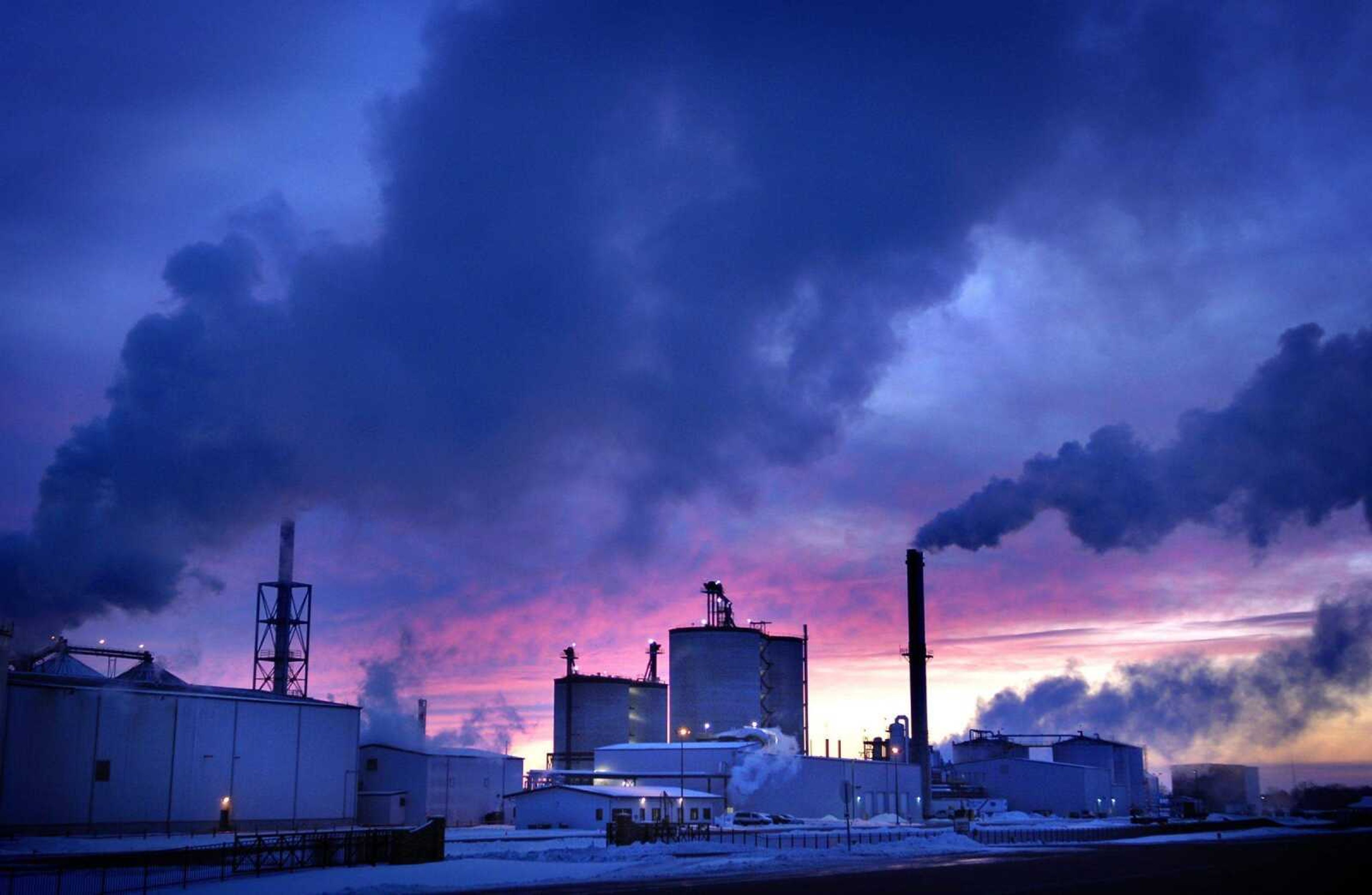Proposed ethanol plants would produce 690 tons of pollutants
Ethanex Energy and Renewable Power of Cape Girardeau are working out plans to build ethanol plants along Nash Road along the border of Cape and Scott counties. A third company, First Missouri Energy, has applied for an air permit from the Missouri Department of Natural Resources...
Ethanex Energy and Renewable Power of Cape Girardeau are working out plans to build ethanol plants along Nash Road along the border of Cape and Scott counties. A third company, First Missouri Energy, has applied for an air permit from the Missouri Department of Natural Resources.
If built, Ethanex and Renewable Power will add 690 tons of pollutants annually to the nearly 8,600 tons currently produced by the area's industries. Buzzi Unicem, the cement kiln, is by far the largest producer of pollutants at 8,500 tons annually. More than 7,000 tons of the pollutants Buzzi Unicem produces are in the form of carbon monoxide.
The largest percentage increase in emissions from the new plants will be in the form of hazardous air pollutants, or HAPs.
Computers can crunch numbers on emissions but can't draw a picture of how the plants could affect the quality of life locally.
Additional particulate matter and new sources of sulfur dioxide will be a concern to people who have asthma or chronic obstructive pulmonary disease, often the result of smoking. The particulate matter also will cause more nasal symptoms for allergic or nonallergic rhinitis, said Dr. Janna Tuck, a Cape Girardeau allergist. Sulfur dioxide is a known airway irritant.
For people with allergies, air pollution "definitely increases their symptoms," Tuck said. "In larger cities we tell patients if there are yellow or red alert days to stay inside."
Scott City Councilman Rob Henderson has concerns about the wisdom of ethanol as an alternative fuel and about the air pollution each of the plants can contribute to the local atmosphere. "Three hundred tons of something that's lighter than air," he said. "That's huge."
The Missouri Department of Natural Resources uses air quality computer models to determine whether to issue an air permit to a company proposing to build an ethanol plant. The models help the DNR determine how much pollution is within acceptable limits when considering the approval of a construction permit for a new source of pollutants. The models evaluate the amount of pollution solely at the location of the plant, using information provided by the applicant and by other industrial sources in the area. If a hypothetical fourth plant applied to build on Nash Road it probably would be denied unless situated in the middle of about 1,000 acres of land, said Kyra Moore, Permits Section chief for the DNR Air Pollution Control Program.
"That is currently a very concentrated area in particulate emissions," she said.
The DNR approved the construction permit for Renewable Power in June and for Ethanex in September. The agency has asked First Missouri Energy to provide more information for its construction permit application.
Moore said the DNR staff took locational readings where the Ethanex and Renewable Power stacks would be. She said the pollution models also account for the considerable truck traffic expected at the plants. Ethanex projects 45,000 truck shipments annually, receiving and shipping grain and loading out ethanol. The number for Renewable Power is closer to 60,000.
The Ethanex Energy plant will produce 138 million gallons of ethanol per year. Spokeswoman Leslie Turner in the company's offices in Charleston, S.C., said negotiations are continuing on a joint venture with SEMO Milling, a local company that makes food-grade corn products.
Renewable Power plans a smaller plant with a capacity of 93 million gallons. The First Missouri Energy plant would be capable of producing 65 million gallons annually. Together the three plants would provide up to 150 jobs.
Renewable Power continues to work on acquiring financing, said Mitch Robinson, executive director of the Cape Girardeau Area Magnet. He doubts whether all three ethanol plants will be able to locate here because of the high demand for corn. "That is why companies are locating on the river or rail or both," he said. "There is concern that if there was a blight situation that they would be able to bring corn in from outside the region."
Missouri has five operational ethanol plants. Four plants have current air permits to build and operate. Six applications for plants are pending.
Ethanol plants produce a variety of air pollutants, including particulate matter in the 10-micron range. The HAPs include acetaldehyde, acrolein, formaldehyde, 2-furaldehyde, methanol and acetic acid.
A yeasty smell
Henderson has visited ethanol plants in Missouri and Illinois. Some were not cleanly run, he said. "I'm afraid it's going to smell so bad I have to sell my house and move somewhere else," he said.
The smell is a yeasty odor associated with a brewery, said Kendall Hale, chief of reviewing new sources of air pollution for the DNR.
Robin Cole, a Cape Girardeau businessman who chairs the state Small Business Compliance Advisory Committee, has visited the 50 million-gallon ethanol plant in Laddonia, Mo., which began operating in December. He calls it "a marvel of modern industrial production." He did not see any visible pollution that concerned him. "Based on what I know I do not see negative impacts coming from these plants," he said. "But my mind is open."
He invited anyone with a small business who has fears about the impact of the plants to talk to him.
Hale doesn't think either of the planned plants will emit the amount of pollutants they have projected. "I've never seen one that doesn't try to build in a cushion," he said.
Since 2002, ethanol plants in Missouri have been cited 17 times for violating air pollution control rules. The most frequent violator has been Golden Triangle Energy in Holt County in extreme northwestern Missouri. The company has been cited three times for emission violations and once for an odor violation.
Kat Smith, executive director of the Missouri Coalition for the Environment in St. Louis, said her organization is focusing primarily on the effects ethanol production is having on groundwater. Ethanol production requires large amounts of water -- 4.3 to 4.8 gallons to produce one gallon of ethanol. In addition, boosting the production of heavily fertilized corn puts more fertilizer into streams and groundwater.
Air pollution is not the most important issue surrounding ethanol production, but it is an issue, she said. "We're looking critically at it."
Smith said subsidizing ethanol production doesn't make sense. "The numbers don't add up. The plants are polluting their communities and increasing water pollution. A serious change is in order here."
Robinson said the intensity of the DNR's modeling process should alleviate concerns about additional air pollution. "I don't believe it's going to adversely impact residents in the region or I wouldn't want it either," he said.
sblackwell@semissourian.com
335-6611, extension 137
Connect with the Southeast Missourian Newsroom:
For corrections to this story or other insights for the editor, click here. To submit a letter to the editor, click here. To learn about the Southeast Missourian’s AI Policy, click here.











